We tested the BenQ RL2755HM with a colorimeter for accurate out-of-the-box results of the screen’s colour reproduction, while also spending a good time playing PC and console games on it as we'll as using it as a desktop display, for a subjective view of its performance.
As previously stated, the default colour preset is called ‘FPS’ mode. We measured the screen first using this mode, and also in ‘Standard’ mode. We also measured the brightness, black point and contrast ratio of every preset, and measured the Delta E accuracy in both ‘Standard’ and ‘FPS’ presets, since the results were wildly different.
From daily use of the RL2755HM, we had no complaints about its picture quality when playing games. No serious ghosting was noticeable, and sometimes we did mess about with the Vibrance setting for some seriously bright colour. We imagine Mario Kart in particular would be amusing to play with this setting set to maximum.
But as this is a gaming screen, so we’re not expecting the absolute best colour reproduction or brightness uniformity. It’s not designed for that, and if that’s what you’re looking for, you’ll probably need to spend a bit more and go for a display intended for graphic design work. But it’s still fine for general desktop use.
Even then, the results from our tests are mostly good.
95 per cent sRGB and 73 per cent Adobe coverage isn’t quite up there with some of the displays we’ve seen, but it’s a result that’s fine for daily use.
Uncalibrated brightness levels of 335 nits and a black point of 0.49 (in the default ‘FPS’ mode) are fine results, while the measured contrast ratio of 690:1 is excellent, with a white point very close to 6500k.
From the five presets, Gamma 1 is close to 1.8 while Gamma 3 is closer to 2.1.
However, the Delta E result in FPS mode is awful, with a result under 5, and a maximum value above 10. This is typical of many gaming-focused presets on monitors, colour accuracy simply isn’t a consideration.
Switching to ‘standard’ mode made things look a bit better though.
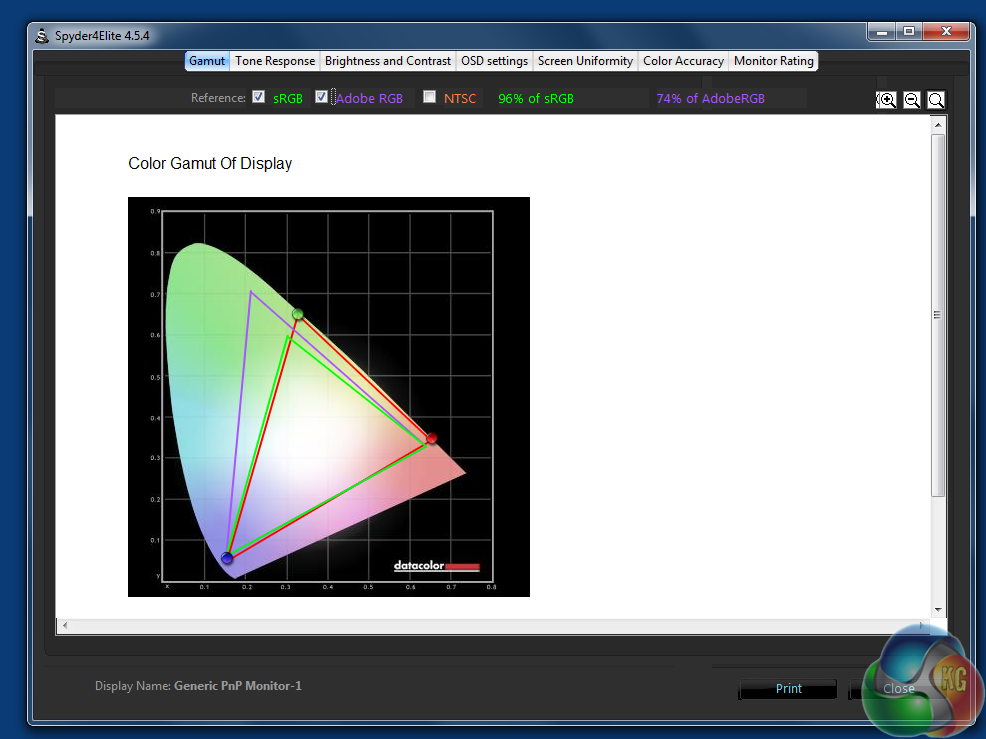
In ‘standard’ mode the sRGB coverage increases to 96 per cent, with 74 per cent Adobe.
Colour accuracy returns to acceptable levels, with a result under three, in line with many TN gaming panels at this price point.
We went through all the presets to measure contrast, colour accuracy and brightness.
As you can see, they vary quite a lot, with the ‘sRGB’ and ‘Game’ settings increasing contrast to 720:1, and the ‘RTS 1’ and ‘RTS 2’ figures adjusting the white point, for a more blue overall look. We weren’t too keen on the effect, though.
Finally, we calibrated the display when in ‘Standard’ mode, although it didn’t seem to affect the results.
sRGB and Adobe coverage remains identical.
Brightness levels remain similar, with the white point hitting 6500k.
And the colour accuracy improves slightly, with an average Delta E closer to 2 than before calibration.
The 2-watt speakers were a bit of a let down. At normal levels they sound ok, but when at maximum volume they started to sound a bit tinny, notably more so than many other displays we’ve reviewed.
 KitGuru KitGuru.net – Tech News | Hardware News | Hardware Reviews | IOS | Mobile | Gaming | Graphics Cards
KitGuru KitGuru.net – Tech News | Hardware News | Hardware Reviews | IOS | Mobile | Gaming | Graphics Cards


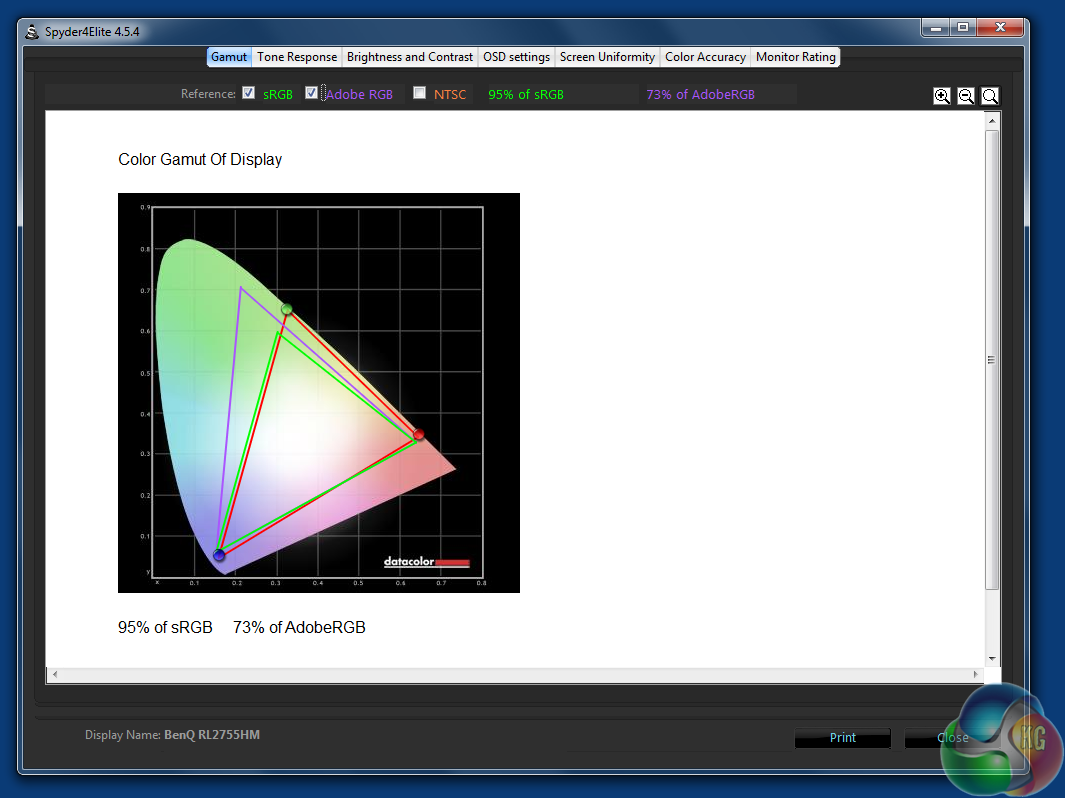
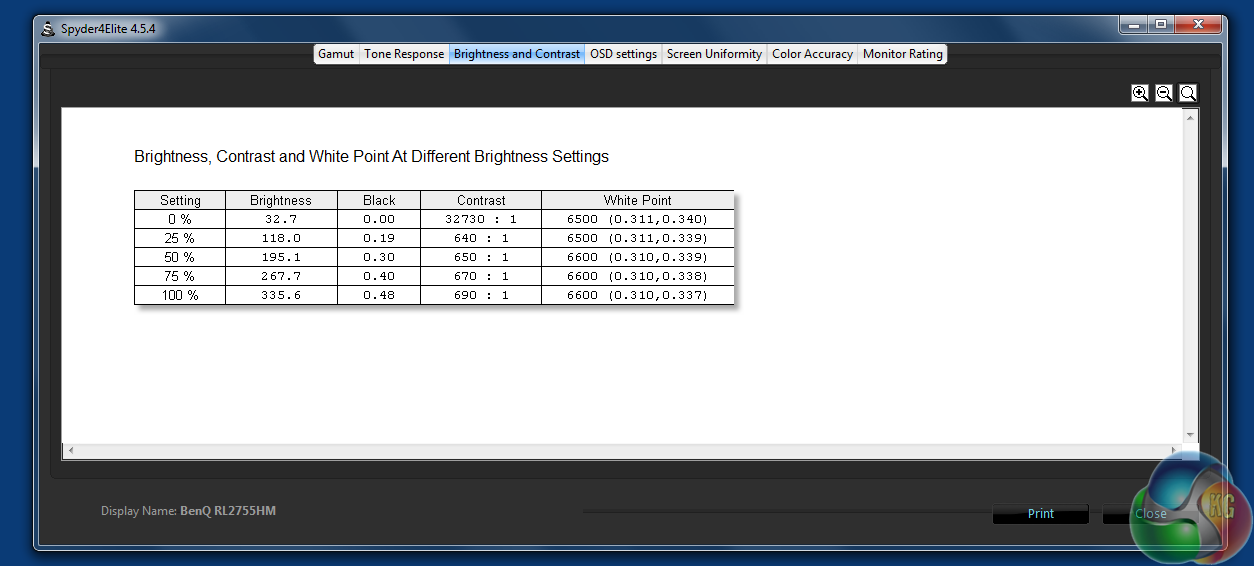
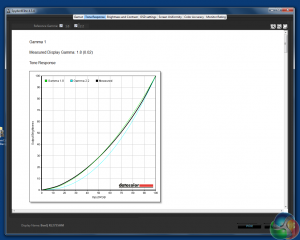
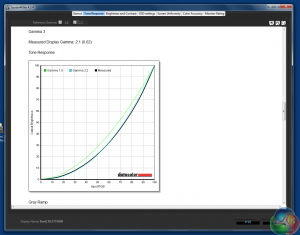

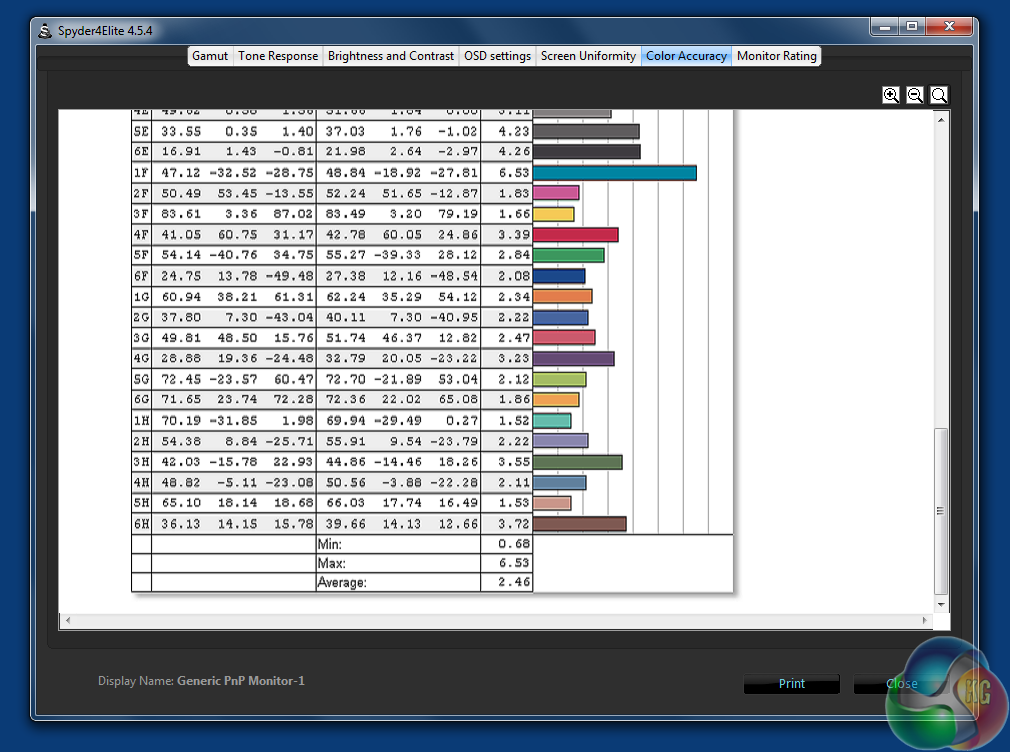

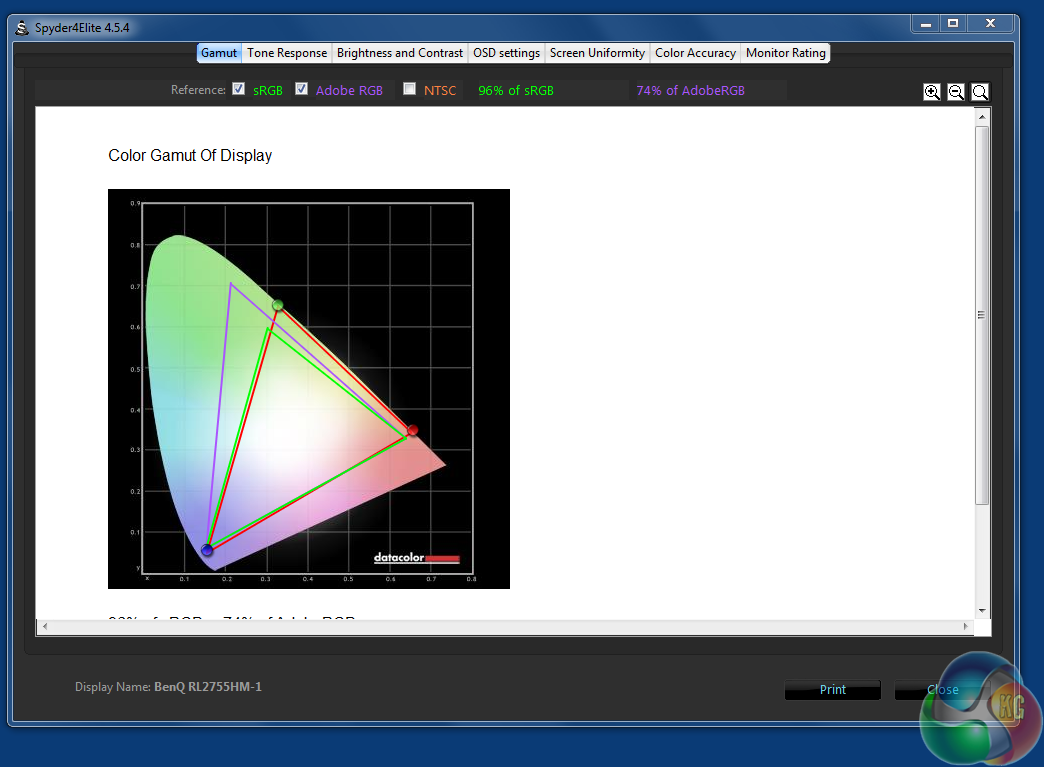
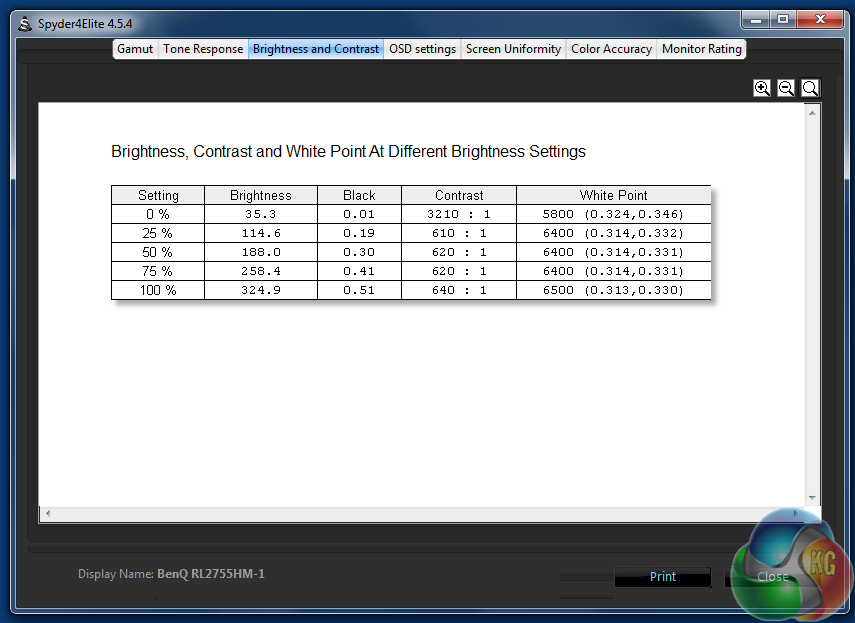
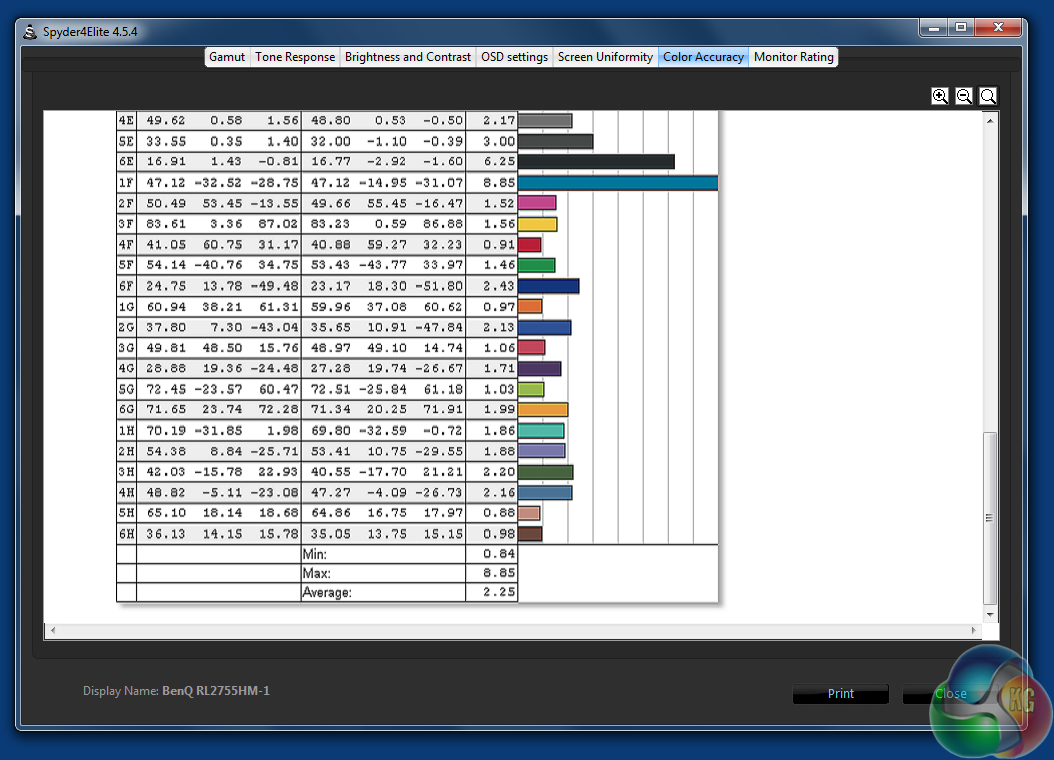

Check out with this site kitguru _____ ……………Keep Reading